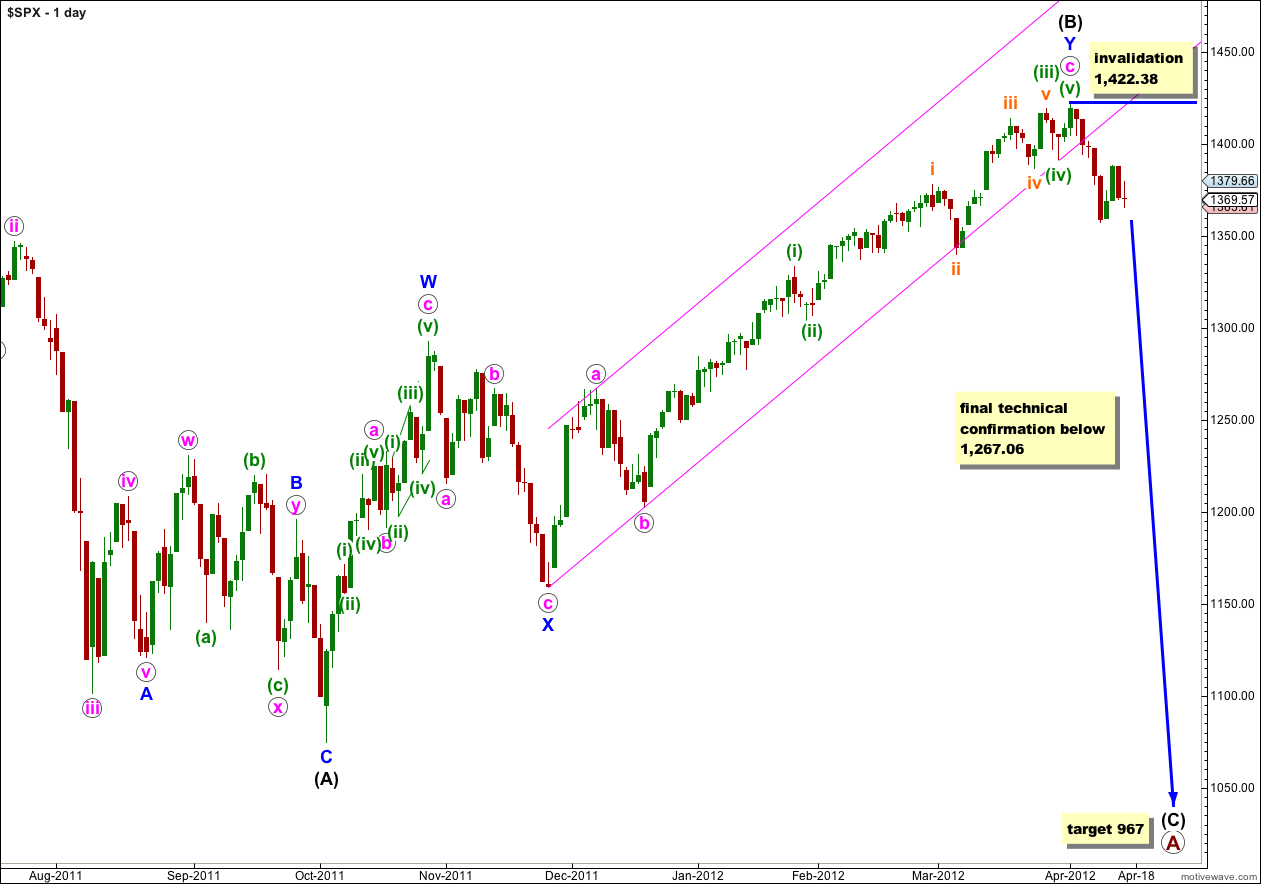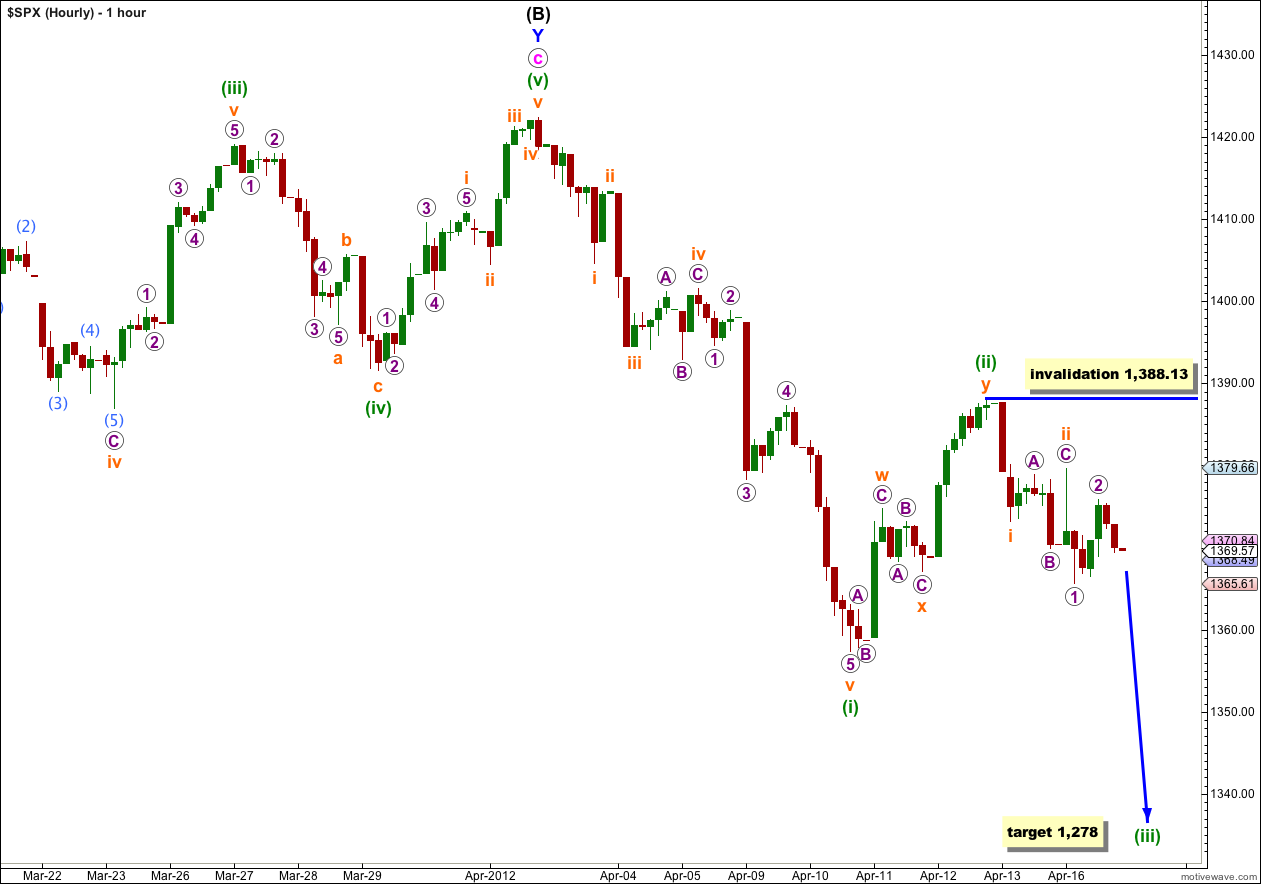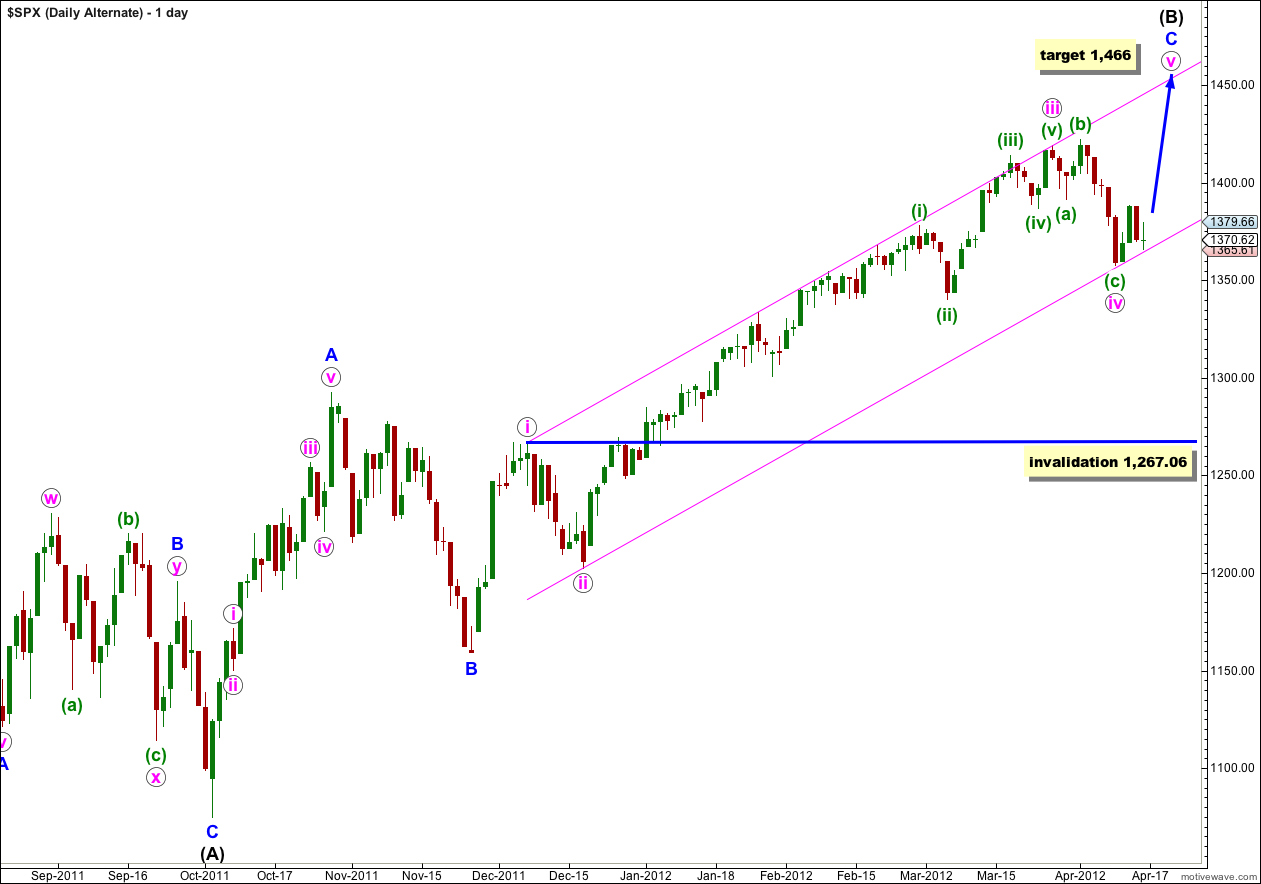The S&P 500 has moved sideways during Monday’s session, but importantly price found support at the lower edge of the parallel channel on our alternate daily chart. With price strongly contained within this channel we must accept the risk that we may yet see a new high. Until this channel is breached we cannot confirm a trend change.
If this channel is going to be breached it should be tomorrow.
Click on the charts below to enlarge.
At primary degree wave A would be an expanded flat correction because wave (B) black is a 123% correction of wave (A) black. We would expect wave (C) black to most likely reach 1.618 the length of wave (A) black a 967. If price moves through this first target then the next (less likely) target would be where wave (C) black reaches 2.618 the length of wave (A) black at 685.
Within wave (C) black no second wave correction may move beyond the start of its first wave. This wave count is clearly invalidated with any movement above 1,422.38.
This wave count has a typical look for wave c pink. The third wave is extended which is most common, and its subdivisions can be seen clearly on the daily chart which should be expected. It agrees with MACD in that within wave c pink the strongest reading is for the third wave.
Wave (B) black is a double zigzag structure which is a common structure. Within the first zigzag labeled W blue the subdivisions fit most neatly as a zigzag.
If the channel on the daily chart for the alternate wave count below is breached then we may have significantly increased confidence in this wave count. Movement below 1,267.06 would finally and technically confirm a large trend change.
Monday’s session is unconvincing as a third wave. We need to see strong downwards movement tomorrow for this wave count to make sense. If that does not happen this wave count will significantly reduce in probability.
At 1,278 wave (iii) green would reach 1.618 the length of wave (i) green. If this wave count is correct this target should be reached by the end of this week.
If wave ii orange is not over and extends further it may not move beyond the start of wave i orange. This wave count is invalidated with movement above 1,388.13.
Although the containment within the parallel channel on the alternate wave count below is concerning, on the hourly chart this wave count has a better fit. For the alternate we would have to see the upwards wave labeled here (ii) green as an impulse and on the 5 minute and hourly charts it does not subdivide easily as an impulse. The easiest subdivision is as a double zigzag.
Alternate Wave Count.
Price found support exactly at the lower edge of this parallel channel during Monday’s session. This is concerning and may indicate that this alternate wave count is correct. From the looks of the channel it looks correct, but its subdivisions don’t fit as well as the main wave count.
If this channel is breached tomorrow with downwards movement this wave count would significantly decrease in probability. If this channel is strongly and clearly breached I will discard this wave count. But until that happens we must accept the risk that this wave count could be correct and we may see new highs, before the large trend change we are waiting for.
If the upwards wave labeled A blue here subdivides into a five then wave (B) black may be a single zigzag structure. This wave count has a fairly low probability because this wave subdivides most easily into a three, and it is difficult (but possible) to see it as a five. As a five it has a strange looking third wave which reduces the probability of this wave count.
At 1,466 wave v pink would reach equality with wave i pink. Wave (B) black would be almost 138% the length of wave (A) black, the maximum common length for a B wave in relation to an A wave of a flat correction.
Wave iv pink may not move into wave i pink price territory. This wave count is invalidated with movement below 1,267.06. However, in practice I would discard this wave count before price gets that low, as a strong and significant breach of the parallel channel containing wave C blue would reduce the probability of this wave count.



